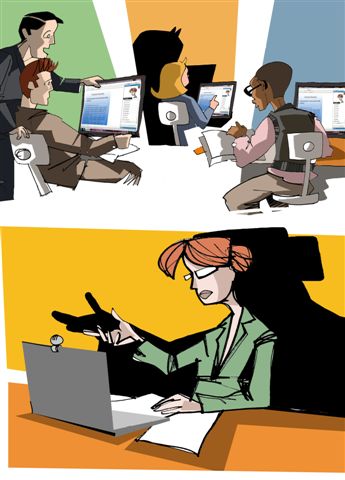Five things not to do for a webinar
Updated on 05 April 2024
So you think you know all about webinars? You know that webinars are virtual classrooms that include live audio and video from the presenter. Many organisations use webinars as a live classroom for education, promotion, or just in time business meetings with colleagues or a wider audience. Depending on who is using them, webinars can cover a wide range of possible topics and area of presenting. Companies evaluate their live sessions differently, and to be honest not all of them have the same criteria. Discussion about the necessity and success of delivery is tightly related to the content you are trying to present, goals you set and the very nature of the webinar (such as free educational webinar, paid presentation style webinar). There are many articles that suggest the proper way of using webinars, but in this text I will try to point out several examples of what NOT to do. I have prepared this summary based on our three-year experience in conducting live, diplomacy related webinars, and from attending webinars presented by other organisations.
1. Don’t start late

First things first: with today’s tight schedules and dynamic online working environments, time is one of the most valuable commodities. Never mind the purpose of your webinar, your attendees are the most important part of the successful event. Their patience is limited. Even if they wait for the beginning of a delayed webinar the chances are slim that they will come back for more.
2. Don’t use audio only
We already wrote about the importance of using video as a powerful tool for online presence. There are many pro’s and very few con’s. But please don’t go for an audio only live event. It is time for us to admit: the age of telephony is behind us, especially because you are targeting the online community, which is dynamic and keen to use new technologies. Audio only formats that are used nowadays on the web (e.g. podcasts, radio shows) target audiences with different time habits. Events that use audio only are most likely pushed behind other tabs to be listened in a ‘time of my own’. In the end, attendees are more likely to revisit the material if there is a video summary.
3. Don’t run a webinar without pre-prepared materials
Enrich your event by introducing pre-prepared material at any time. Possible features vary from platform to platform but overall, common features for all delivery platforms are presentations, polls, and prepared video materials. The more you can engage your attendees, the more successful the event is. For example, not only can you get valuable info from a poll, attendees also want to know the opinion of the other people present. If you have the time, and content allows, make some effort even for the post-event activities in a form of a quiz.
4. Don’t finish a webinar without Q&A session
You are the end of your presentation, and that is a perfect time for the Q&A session. How can you evaluate the success of your delivery if you don’t have direct feedback? On many events this feature is more important than actual delivery. Did they get the right cues? What was that on page four? Can you please clarify the issue you mentioned? You can give your attendees the chance to ask questions via audio, or use the chat area, but be sure that you never miss that part.
5. Don’t be too long
I’m not going to give away the secret of the ideal length of a webinar (trust me, there is one). I will leave that for a ‘what to do for a webinar’ type of article, but one thing is sure, don’t be longer than one hour. You may be interesting and the presentation fascinating, but attention span on the web today is a bit shorter. Events longer than one hour will be hard to follow and can lead to topic saturation effect once the event is over. Leave some things unsaid; create the opportunity for another event on which you can elaborate further. And a key final point, recordings of an event longer than one hour are less likely to be opened in the first place.
The road to successful presentations can be different from occasion to occasion, strongly depending on what you are presenting, how do you do it, and who is on the other side of the line. It depends on pre event preparations (proper advertising, neat and simple registration and an invitation notification process) but also you can extend the engagement of participants for a longer time period by using post event activities such as quizzes, an evaluation, a summary and a recording of the event.
Finally, one more thing – don’t miss the opportunity to explore virtual classrooms and new live collaboration tools. It will benefit both you and your students.
Related blogs
Related resources
Subscribe to Diplo's Blog
The latest from Diplo and GIP
Tailor your subscription to your interests, from updates on the dynamic world of digital diplomacy to the latest trends in AI.
Subscribe to more Diplo and Geneva Internet Platform newsletters!
Diplo: Effective and inclusive diplomacy
Diplo is a non-profit foundation established by the governments of Malta and Switzerland. Diplo works to increase the role of small and developing states, and to improve global governance and international policy development.

